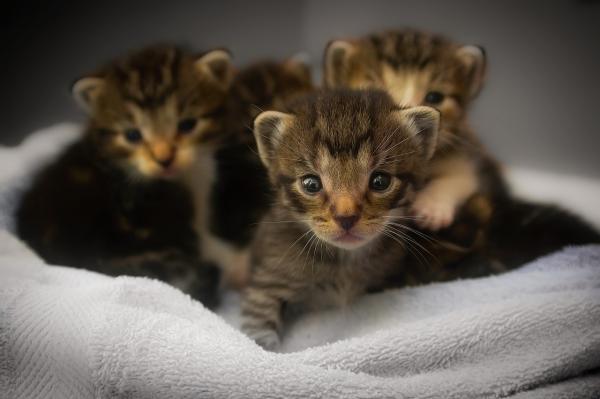Lice in cats – Symptoms and treatment

The lice they are one of the external parasites that most often affect cats. They usually invade stray cats or house cats with access to the outside, especially if they are still young, old or sick.
Although they are not as contagious as fleas and ticks, lice cause the same discomfort in your feline friend, like itching and hair loss, in addition to trabnsmitirle certain diseases. That is why in this article we have prepared for you Lice in cats, symptoms and treatment.
How do lice affect cats?
The louse is a insect apterous of a few millimeters that does not have wings or is able to jump, but lives as a parasite of some mammals. There are around 3000 different types of ftirápteros (Phthiraptera) and each one is quite selective with the animals that become their hosts, so they usually only attack certain specific species.
The louse that attacks cats is the Felicola subrostratus; it is not transmitted to other animals or to humans, although it is transmitted to other feline species. It affects, above all, young cats that have not yet developed good defenses, to elderly felines who have stopped grooming and to all those who, either due to poor diet or disease, are weak or immunosuppressed. The long coat is also a determining factor when suffering from these parasites.
They tend to be more common in cold times of the year and they get infected between cats that spend a lot of time together, because the louse neither flies, jumps, or hides in the grass in search of a guest. All his life takes place in the body of the animal, far from which he dies quickly, in just 1 or 2 days. Cat lice do not spread to humans.

Symptoms of lice in cats
The presence of lice on your cat’s fur is quite clear. First, easily they are appreciated at a glance, due to its dark color as they walk through the hair. Even in cats with long hair, you can see them if you remove the upper layers a bit with your fingers, although the most evident symptom is eggs, whitish, which adhere very easily. You can try passing an anti-lice brush to make sure they are there.
Other characteristic symptoms of the presence of lice in the cat are:
- The hair looks tangled and dirty.
- The purito or itch is quite intense, so it is likely that the cat will scratch frequently or try to bite the areas that bother him most, causing even self-mutilation.
- As a result of scratching and biting we can see wounds that can become infected or thicken the skin.
Treatment of lice in the cat
In the market there are multiple options to eliminate lice that affect your cat, although none is specially formulated for these parasites, since they are the least common.
In any case, if your cat has a lice infestation we will start by making a bath with an anti-parasitic shampoo. Then we will use an anti-lice comb to remove the insects that still remain in the dermis, as well as the eggs. Once removed, you should choke the pesky pests in a little alcohol or hot water. Make sure you work the fur completely.
If you have never bathed your cat, you must assume that bathing an adult cat for the first time can be very complicated, not to say practically impossible. In these cases it may be useful to offer a antiparasitic pill that also act for the elimination of external parasites.
Finally, and in the event that it is impossible to bathe or offer a pill (and although we do not recommend the use of drugs whenever possible), we can consult with our veterinarian the option of calming our cat with medication. Of course, we will totally reject the use of acepromazine.
After two days after the application of any antiparasitic product we must apply a pipette, necklace or spray to finish with the parasites that could remain alive in the fur of our feline and to prevent the appearance of new ones.
If there are other pets at home, a preventive treatment will be necessary to avoid infestation. Lice do not survive outside the animal, but it would be advisable to clean the beds, bedspreads, toys and other objects of your cat. Use hot water for it.

Prevention of lice
It is very important to prevent the appearance of parasites in cats that have access to the outside or those that they coexist with other pets They do have access outside, as is the case with cats that share a home with dogs.
The ideal in these cases is to apply deworming products periodically, such as pipettes, necklaces or sprays. To know how often to deworm your cat, consult your veterinarian and follow Product instructions in a rigorous way.
This article is merely informative, in .com we do not have the faculty to prescribe veterinary treatments or make any kind of diagnosis. We invite you to take your pet to the veterinarian in case of any type of condition or discomfort.
If you want to read more articles similar to Lice in cats – Symptoms and treatment, we recommend that you enter in our Deworming section.


